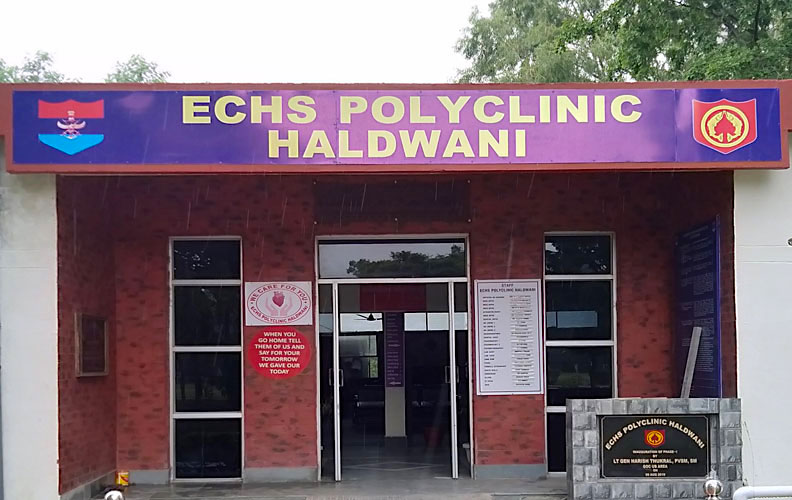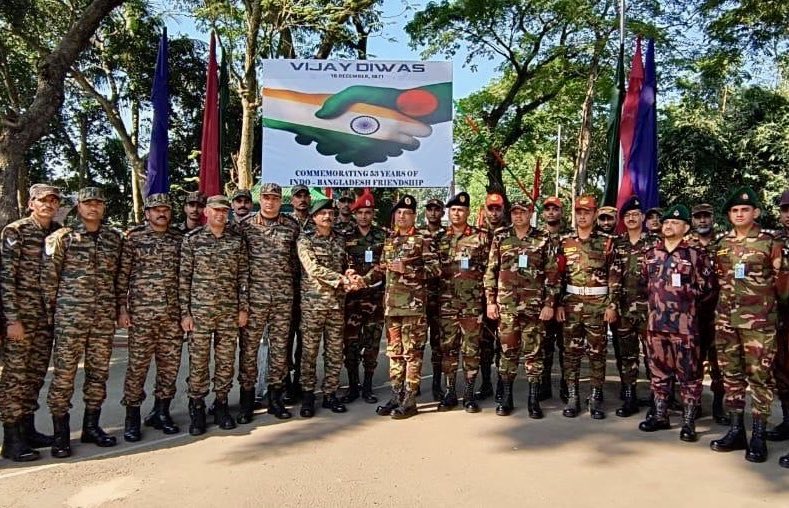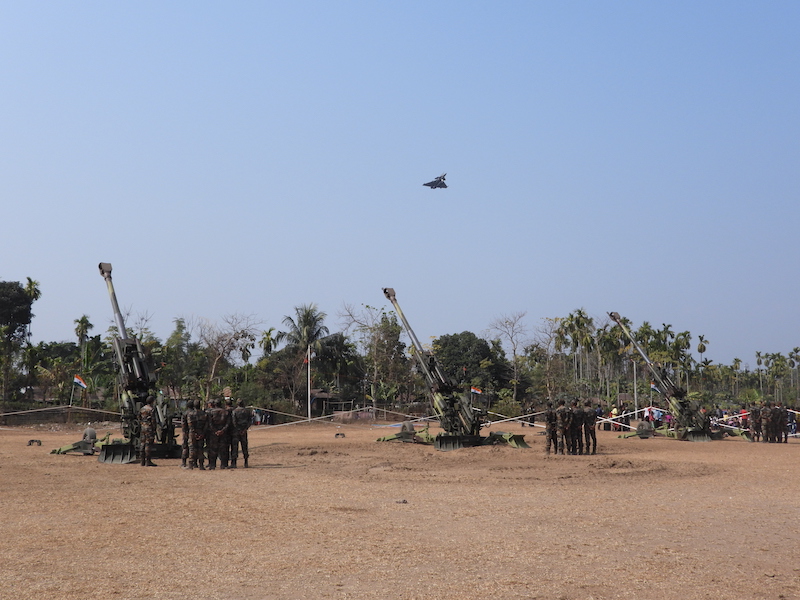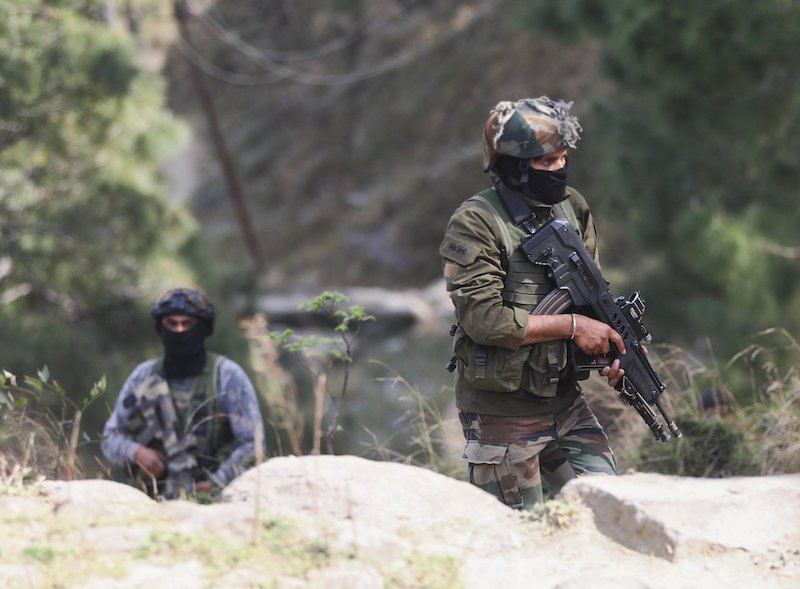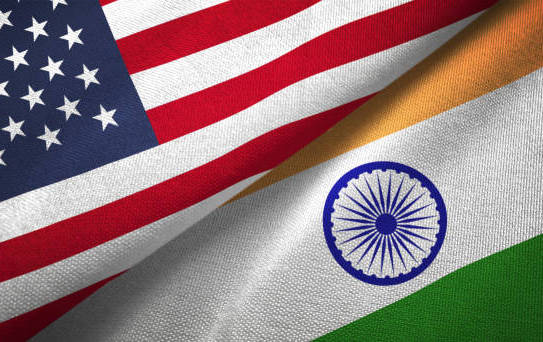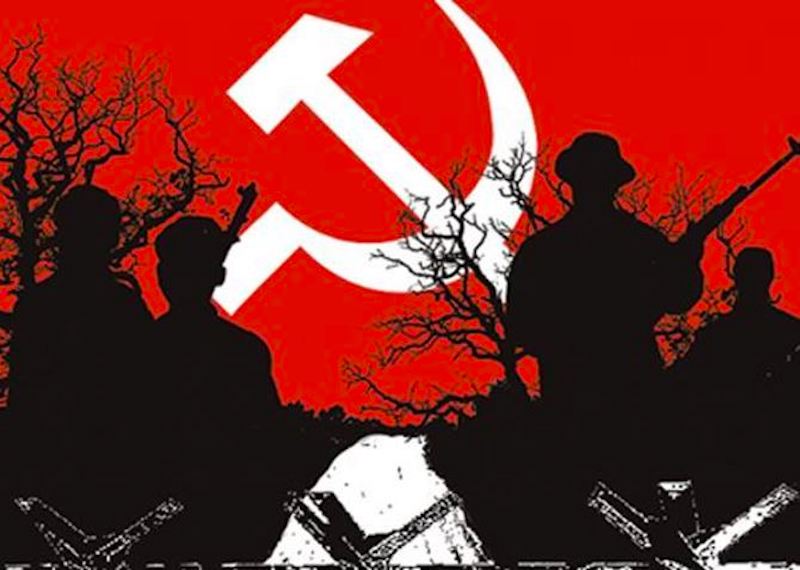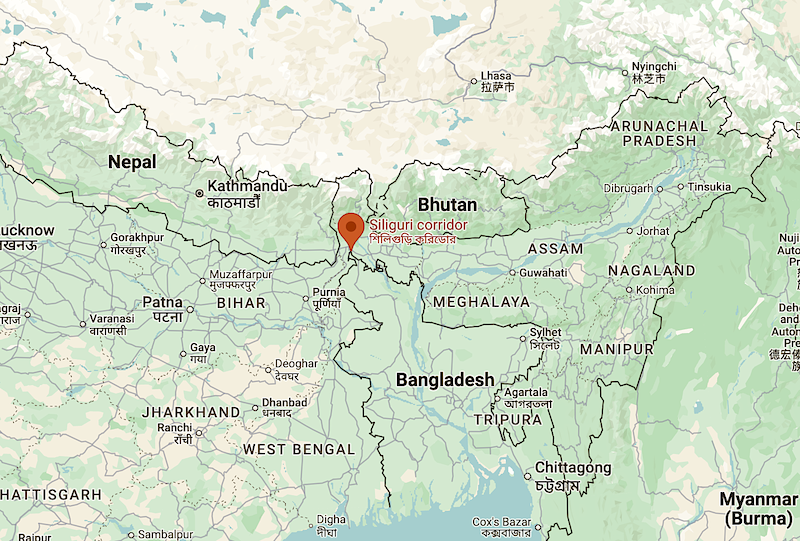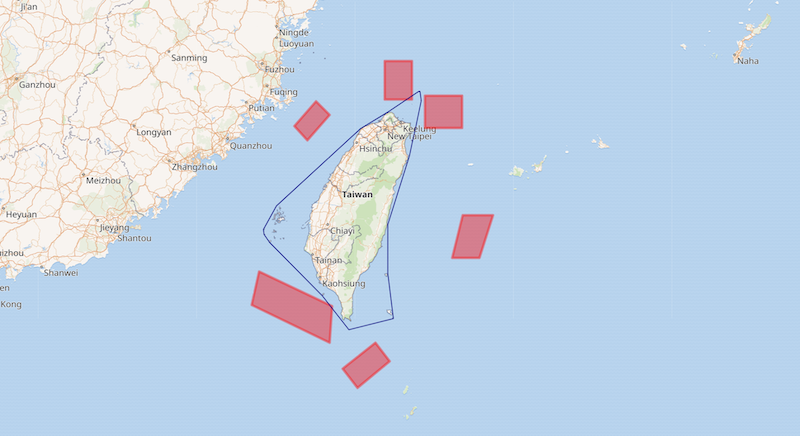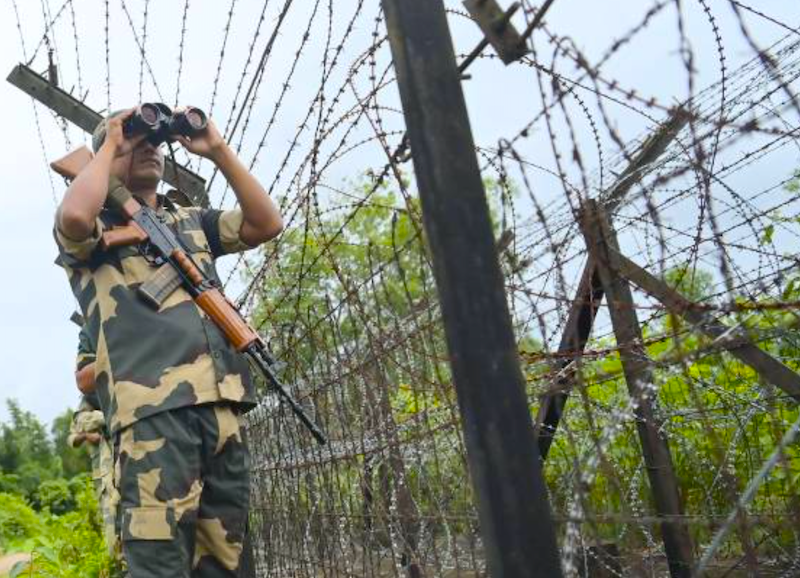 Indian Army’s Gorkha troops sitting with China’s PLA troops somewhere in eastern Ladakh (exact location unknown). This photo was taken by a Chinese soldier days before the 1962 war started.
Indian Army’s Gorkha troops sitting with China’s PLA troops somewhere in eastern Ladakh (exact location unknown). This photo was taken by a Chinese soldier days before the 1962 war started.
“When we were flown into that post, we knew we were walking into a death trap. We 60 were surrounded by nearly 1,000 Chinese.” — Lt Col SS Hasabnis, VSM
In 1962, India was establishing more forward posts along its northern borders. More posts meant more troops. Therefore, in May 1962, the Indian Army Headquarters handpicked 5 Jat, which was deployed in the Uri sector, to defend Ladakh’s northern borders. The 5 Jat, led by Lieutenant Colonel Bakhtawar Singh, was completely airlifted by July 23 and moved to Darbuk, where they acclimatized before moving to various locations, including posts at Daulat Beg Oldie.
The 5 Jat without the C Company was assigned the middle sector. Major Bhairon Singh’s C Company was attached to the 14th J&K Militia and assigned to the DBO sector.
Read also: ‘Gateway to Hell’ – The 1962 operation in Daulat Beg Oldie
The Galwan-Chang Chenmo sector, or the middle sector, is located south of DBO and east of Shyok. The 1/8 Gorkha Rifles were in control of this sector. Higher officials decided to establish an isolated post deep within the Galwan valley in June 1962. On July 4, the commanding officer of 1/8 Gorkha Rifles, Lt Col Hari Chand, MVC, established a platoon-sized post opposite the Chinese post at Samzungling on orders from Army Headquarters. On July 10th, around 300 Chinese surrounded the Galwan post, which was manned by Naib Subedar Jang Bahadur and 30 other ranks of 1/8 GR.
The Chinese had left the surrounding area the next day, but they were still close to the post. They continued to demoralize the troops with propaganda slogans. Major VP Bhasin of the 1/8 Gorkhas arrived a few days later with a reinforcement column to strengthen the post. The Chinese used to cut off the supply route through the patrol base. Once they stopped a platoon-sized Yak-loaded supply patrol and insisted the patrol return to the base immediately. No fire was exchanged during the incident.
After three months on the deployment, the Gorkhas were relieved. Mi-4 helicopters were used for the relief operation. Brigadier Rawind Singh Grewal, MC, had been transferred by the time the Gorkhas were relieved, and Brigadier TN Raina had taken over command of 114 Brigade.
Read also: ‘Honour, Enfield, and Panama’ – The story of Lt Yog Raj Palta
The 5 Jat was ready for induction into the sector in the first week of October 1962. The Alpha Company of 5 Jat, comprising 60 men led by Major SS Hasabnis, was chopper-lifted and flown to the Galwan post.
 5 Jat being sent off to Ladakh. Delta Company commander Major Sangram Singh (3rd from right) can be seen shaking hands with the Sikh brigadier.
5 Jat being sent off to Ladakh. Delta Company commander Major Sangram Singh (3rd from right) can be seen shaking hands with the Sikh brigadier.
The Jats in Galwan faced numerous challenges. Snow began to fall, and the land route was completely cut off due to the Chinese posts. The post was completely dependent on air supplies, which only arrived when the weather was clear. Supplies would occasionally fall on the enemy side as well. The Chinese continued to harass the troops using propaganda slogans and encircling the post every now and then.
Galwan post
The Chinese bombarded the Galwan post with heavy artillery and mortar fire in the early hours of October 20, 1962. The intense shelling destroyed the post’s tents and defences. After the shelling stopped, the Chinese infantry launched a battalion-sized assault on the forward defences. Those valiant Jats were fighting from their crumbling defences. Heavy weapons were not available to support the Indian troops.
Read also: ‘Fire Till Eternity’ – The story of Major Shyamal Dev Goswami
Even after being injured, Subedar Nihal Singh inspired his troops to fight until the bitter end. The troops continued to fight and resist, but the forward defences were eventually breached. Major Hasabnis, in the rear position, continued to repulse Chinese attacks with his remaining troops.
After hours of fighting, the Chinese were able to capture the post, killing 36 Indian troops, including Captain (Dr) Paul of AMC, out of 60 all ranks. Eighteen men were severely injured. The men fought until the last bullet was shot.
Those men, even though they knew death and defeat were staring them in the eye, knew there was no way out. But they did not raise the white flag of surrender. They were vastly outnumbered. The enemy forcibly captured Major Hasabnis and his remaining troops.
When Indian helicopters flew over the Galwan post on October 21, they were fired upon by the Chinese troops. The pilot was unable to contact the post. When the pilot returned, he reported, there was no sign of life on the post. All the men were believed to be missing in action.
DBO sector
Post 5, Pramodak, was the tiniest post in the sector, with only four men under Havildar Tulsi Ram of 5 Jat’s C Company. It was attacked by two Chinese companies, but due to the post’s altitude, the men of 5 Jat dominated and held the post until the Chinese began shelling. Except for the NCO who decided to continue to strike the machine gun, all four men died. His ammunition was running out, so Havildar Tulsi Ram slipped out of the way with his gun and went downwards to DBO. He was later awarded the Vir Chakra. Pramodak fell.
Read also: Battle of Walong – The story of Lt Bikram Singh Rathore
At 7pm on October 20, the Chinese began shelling Post 4, which had nearly 40 men and was in communication with the DBO OC, Major Randhawa, who asked men of 5 Jat to return to DBO. However, due to the pitch-black night, only one JCO and nine ORs were found by the patrol sent from DBO garrison.
 Chinese troops attacking an Indian post in Galwan, in 1962.
Chinese troops attacking an Indian post in Galwan, in 1962.
Second Lieutenant Harish Chander Gujral was sent with reinforcements and relieved Lieutenant Prem Singh on October 22 to take command of the forward post Arni-I in Ladakh and hold it until further orders. He broke through the enemy ring around the post with determination and courage, took reinforcements in, and reorganized the post’s defence.
When he was ordered to leave, he had to fight his way out once more. Second Lieutenant Gujral was awarded the Vir Chakra for his gallant deed. (Later, in the 1965 war with Pakistan, the brave officer fought gallantly and fell fighting.)
Chang Chenmo subsector
Following the fall of the Galwan post, the Chinese moved to the Chang Chenmo valley, which included the strategically important posts, such as the patrol base, Nullah junction, and Hot Springs. The Chinese began shelling all the posts. Major Ajit Singh’s Bravo company was headquartered in Hot Springs and had platoon-sized posts at the patrol base, Nullah junction, and the Hot Springs area.
Read also: 1962 India-China War – The reality of a military defeat
Because Galwan had already fallen, it was no longer necessary to maintain the patrol base, which served only as a link between the Nullah junction and the Galwan post.
Patrol base
Subedar Amar Singh’s post at the patrol base was ordered to withdraw and return to the Nullah junction. The Chinese began to heavily bombard the post. The platoon began to withdraw as soon as the sun set.
“We’ve come here to fight the Chinese,” Subedar Amar Singh would tell his men. “Remember, no matter what, we are not leaving this sacred ground.”
A section led by Subedar Amar Singh remained in the rear to observe and report on Chinese activity in the area. True to his words, Subedar Amar Singh stayed back.
The Chinese began shelling the section's posts on October 22, at 11.30am. Subedar Amar Singh went to the observation post to assess the situation when the Chinese attacked the post; and after a while, the entire section was under attack. Subedar Amar Singh did not try to escape but instead continued to inspire his men to fight until the end.
The Chinese overran the post, killing the brave commander and nearly all the men. The patrol base was destroyed.
Kongma and Ane-la
A crucial position held by a platoon of 5 Jat's Delta Company. The Delta Company, minus two platoons, was based at the battalion headquarters in Phobrang, which was led by Major Sangram Singh. Kongma was a well-positioned post. On October 22, in broad daylight, 300 Chinese troops attacked the post. The post was heavily shelled prior to the infantry assault. The Indian soldiers manning the post were injured and their defences were destroyed.
 Troops of 5 Jat extricating a stuck Jeep.
Troops of 5 Jat extricating a stuck Jeep.
The first wave of Chinese attacked as soon as the shelling stopped. The valiant Jats fought back and repulsed the first attack. The Chinese kept coming in large numbers. The ammunition for the section’s light machine gun had run out after a few hours of fighting. Naik Munshi Ram emerged from his trench with ammunition from the reserve. While returning to his trench, he was hit by a shell and was killed. Naik Munshi Ram was posthumously awarded the Vir Chakra.
Read also: India needs to shed its hesitancy in dealing with China
Subedar Surjit Singh, the platoon commander, was hit by a burst and fell while moving from section to section, inspiring his men to fight until their last breath and last round. The fighting lasted several hours. Only seven men out of a total of 33 survived. The ammunition ran out, and the post collapsed, forcing the survivors to escape to battalion headquarters in Phobrang.
Ane-la held another Delta Company platoon post. It also came under artillery and mortar fire. The infantry attacked the post in waves, and the first few attacks were repulsed. The fighting lasted all night, but the Chinese eventually took over the post. The survivors were forced to abandon the post.
 Indian troops being evacuated from Ladakh.
Indian troops being evacuated from Ladakh.
Kongma and Ane-la were now under Chinese control and posed a serious threat to other Indian posts, as they could cut off Nullah junction, Tsogtsalu, and Hot Springs.
Nullah junction
The corps headquarters was informed of the fall of Kongma and Ane-la. After reviewing the situation, the corps commander, Lieutenant General Bikram Singh issued orders to withdraw troops, including the Indo-Tibetan Border Police, to prepare rear defences at Tsogtsalu.
The Chinese shelling began in the late hours of October 23, as the withdrawal began. At this platoon-sized post, one section served as the observation post and suffered the most damage. After the Chinese infantry attacked the frontal section, the other two sections were ordered to retreat. The front section commander, Naik Maya Ram, kept fighting and covered the retreat with six of his men. Four of his comrades were killed in the fight, and two were injured. When he realized he couldn’t hold the post, he helped his wounded comrades to extricate themselves, and then he himself abandoned the post.
 Heroes of 5 Jat (clockwise from top-left corner): CO Lt Col Bakhtawar Singh, A Coy Cdr Maj SS Hasabnis, B Coy Cdr Maj Ajit Singh, C Coy Cdr Maj Bhairon Singh, D Coy Cdr Maj Sangram Singh, and 2/Lt Harish Chandra Gujral, VrC.
Heroes of 5 Jat (clockwise from top-left corner): CO Lt Col Bakhtawar Singh, A Coy Cdr Maj SS Hasabnis, B Coy Cdr Maj Ajit Singh, C Coy Cdr Maj Bhairon Singh, D Coy Cdr Maj Sangram Singh, and 2/Lt Harish Chandra Gujral, VrC.
Meanwhile, the 114 Brigade issued a new order – this time to abandon Tsogtsalu and return to the battalion headquarters at Phobrang. The withdrawal via Marsimik-la was impossible because the fall of Kongma and Ane-la threatened the route. As a result, troops were ordered to move along the Chang Chenmo river, keeping the threat in mind.
It was a difficult path to take. After crossing the inhospitable terrain, the troops arrived in Phobrang, and it is said that nearly all of them suffered frostbite or altitude-related sickness.
Hot Springs
Hot Springs, which was the Bravo Company headquarters, was isolated while other posts withdrew. The brigade directed that the Hot Springs post withdraw and join the battalion, minus C Company, at Lukung.
Major General Jagjit Singh, the-then brigade major of the 114 Brigade, wrote in his book: “I personally spoke with the company commander at Hot Springs when he received the orders to withdraw. He was extremely disturbed. He kept on insisting that this gave us a chance to avenge the massacre of our brothers elsewhere. Let Chinese blood flow at Hot Springs. We are well prepared, and my men are fully behind me.”
Read also: New Delhi must force Beijing to blink
After a while, a large number of Chinese troops began to gather in front of the post, so Major Ajit Singh was ordered to retreat as soon as possible to Lukung. The Bravo Company left Hot Springs, but the next day, on October 24, a platoon led by Major Ajit Singh reoccupied the Nullah junction and took control of Hot Springs as well. Major Ajit Singh received the Maha Vir Chakra for this action.
 Indian troops patrolling in eastern Ladakh after the war.
Indian troops patrolling in eastern Ladakh after the war.
From Phobrang to Shyok, the 5 Jat began to fortify their defences. Even though Tsogtsalu was under Jat control, the Chinese didn’t attempt to advance, intense patrolling under Captain NK Chaudhary, Lieutenant Prem Singh, Subedar Norang Lal, and Naib Subedar Jai Lal dominated the area and the sector remained occupied by the Jats. For his meritorious service, Subedar Norang Lal was awarded the Vishisht Seva Medal. Second Lieutenant HC Gujral of 5 Jat at Arni-I in DBO sector was awarded the Vir Chakra for his gallant actions.
A total of 200 men of all ranks were hospitalized, 53 killed in action, and 64 injured. Almost 60 all ranks were taken prisoner, and they returned on May 17, 1963.
Read also: India must move earnestly and quickly to settle border dispute with China
The actions of the “Balwan” (valiant) Jats in the Galwan-Chang Chenmo sector remain unspoken, and their tales of valour and grit go untold. They were aware that they were isolated and outnumbered, but they refused to raise the white flag. Although some Jats are still protecting the sacred soil in the lap of the Himalayas, they were never found. They faced the bitter end with courage.
 A poster of the 1964 movie “Haqeeqat”, which showed the heroics of the 5 Jat.
A poster of the 1964 movie “Haqeeqat”, which showed the heroics of the 5 Jat.
Follow us on social media for quick updates, new photos, videos, and more
Twitter: https://twitter.com/indiasentinels
Facebook: https://facebook.com/indiasentinels
Instagram: https://instagram.com/indiasentinels
YouTube: https://youtube.com/indiasentinels
Editor’s note: This story is based on the author’s conversation with various people who participated in the 1962 war or related to them, and carries references to Maj Gen Jagjit Singh’s book “The Saga of Ladakh: Heroic Battles of Rezang La and Gurung Hill”. All photos and maps are procured by the author from his own sources.
Disclaimer: The views expressed in the article are the author’s own and don’t necessarily reflect the views of India Sentinels.
© India Sentinels 2022-23

